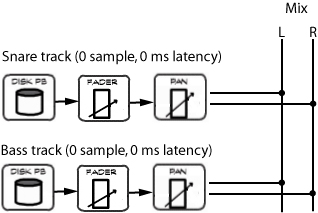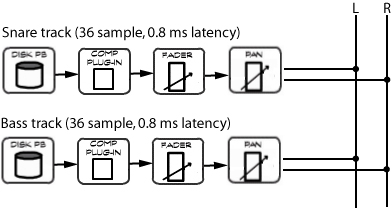In 2015 the U.S. music industry made more money from streaming than from CDs or digital downloads. Streaming platforms now boast more than 100 million paying subscribers worldwide. And the popularity of these services continues to rise, with more than one trillion plays logged last year alone. The times, they are a-changin’.
In case you haven’t noticed, the way we consume music is shifting—and that is impacting artists. (We’ve all seen the pitiful royalty statements and scathing op-eds. And who could forget Taylor Swift’s epic 2015 fallout with Apple Music? But amidst all this talk, no one’s mentioned how the rise of streaming will affect the actual sound of pop music. Streaming will change not only the way pop music is consumed but also the way it’s created. This shift will likely redefine what future hit records sound like. Surprised? You shouldn’t be. There’s always been a close-knit relationship between music, medium, and distribution. For proof, just look to the past.
Built for Radio
In the 1960s, Motown built records for radio. Short songs allowed for the regular interjection of ads, and long intros gave DJs the freedom to talk over tracks. During the 1980s, the dawn of the CD gave way to longer-form content. The length of an average album increased from 40 minutes to well more than an hour. And since it was no longer important to maintain the integrity of vinyl grooves, records started sporting more low end and louder levels. Is it any surprise that hip-hop emerged as a dominant genre during this time? During the 2000s, Apple’s decision to unbundle the album and offer single-track downloads on iTunes shifted the trajectory of the music industry once again. After an album-oriented trend that lasted decades, singles once again became the primary focus.
Along the way, our listening habits evolved too. As on-demand, à-la-carte platforms like iTunes and Spotify emerged, attention spans narrowed. Even I can’t remember the last time I listened to an album from start to finish. Today, music discovery is like mining for gold. We cherry-pick the best songs off albums, curate playlists of our favorite tracks, and ignore the rest. And once we start listening, we’re more impatient than ever. In fact, there’s nearly a 50-percent chance you’ll skip a song before it’s over. Why suffer through a dull bridge, an uninspired outro, or your favorite artist’s “deep cuts?” You’ve got places to be!
Today’s music makers have evolved to serve this ever-changing audience. As long-form content has given way to singles, concept albums have become relics of yesteryear. Albums are now more likely to serve as repositories for singles. And while we may feel nostalgic for iconic albums such as The Dark Side of the Moon, Thriller, and Sgt. Pepper’s Lonely Hearts Club Band, there isn’t much of an incentive to create their modern-day equivalents.
An Emphasis on Sales
However, throughout the history of the music business, the goal has always remained the same: Encourage listeners to purchase records. The music industry as we know it was built to inspire these one-off transactions, and the traditional pop music-making process evolved to follow suit. Infectious, hook-heavy records were crafted to drive listeners to checkout aisles. The biggest hits seemed inescapable for a month or two, but often disappeared as quickly as they emerged. But as far as the music industry was concerned, this was irrelevant. Once a purchase was made, it didn’t matter whether a record was listened to or not. As long as people bought the CD or downloaded the song, labels were happy.
But streaming has completely changed the game. For the first time, financial success is no longer based on onetime sales, but rather on ongoing play. The more a track is played, the bigger the payout. The implications of this shift are massive. In fact, it’s likely to disrupt the entire music business yet again.
On streaming platforms, flash-in-the-pan tracks that burn bright and fade fast are less lucrative than ever. Current per-stream payouts are nothing to write home about, and these tracks won’t stick around long enough to produce meaningful returns. But payouts will continue to rise, and future plays will be worth much more than they are today. And so the most profitable pop songs will burrow their way into the hearts of listeners, inspiring millions of streams for years to come. In fact, the biggest hits may even increase in value as time goes on.
This shift introduces a powerful new incentive to foster deeper, longer-lasting relationships with listeners. While tracks still need to be hook-laden enough to inspire an immediate connection, they must also be worth listening to hundreds, if not thousands of times. Gone are the days when an artist could stuff an album with filler and rely on the strength of a single to drive sales. Today, there’s nowhere to hide. Songs are evaluated on an individual basis, and their success is determined by merit alone. Artists with the ability to master the long game will win. One-hit-wonders won’t stand a chance.
Loudness War Truce
Evolution in streaming technology will also affect the sound of pop music. For example, most streaming platforms now automatically adjust the volume of different tracks so they play back at an equal level. This seemingly inconsequential feature will likely end a decades-long arms race known as the “loudness war,” where artists and labels compete to release the loudest records. Without any incentive to crush tracks, records will be mixed and mastered at much more conservative levels. And this means they’ll have more punch, impact, and dynamics—and sound better!
But what will the pop hits of the future actually sound like? We can only guess. As terrestrial radio continues to become less relevant, arrangements and song structures will likely become more fluid. New, innovative mediums may even emerge. Who says a recording has to offer the same experience with every play? What if tracks evolved over time? What if, after 100 plays, a bonus verse emerged? As play count becomes a dominant metric for measuring the success of tracks, ideas like these are ripe for exploration.
And the impact of streaming will extend far beyond the music-making process. It will have a profound effect on the way music is marketed and promoted as well. In a world where a sale is no longer the goal, there’s less of a need to build up hype before an album’s release. In fact, some artists are already abandoning traditional album releases entirely. Beyoncé dropped her last two albums without any prior promotion whatsoever. As more listeners adopt streaming platforms, artists will need to find new ways to foster longer-lasting, more consistent levels of engagement with their audience.
If any of this leaves you feeling discouraged or intimidated, keep your chin up. I’m optimistic about the impact streaming will ultimately have on the music industry. I believe it will usher in a new era of artistic innovation, and foster deeper, closer connections between artists and their listeners. And some things will always remain the same. Exceptional artists with something unique and special to say will stay in high demand. Great songs will still rise to the top. But one thing’s for sure—as streaming becomes the dominant platform for music consumption, the sound of pop music will undoubtedly change. Will you change with it?
Jim Kerr is a tech entrepreneur that operates several businesses including Team Convergence, Assure Flight, Passion Highway and GRIDJunciton. He is an airplane pilot, PADI SCUBA divemaster, music producer and adventure traveler. Along with his wife Lisa, they travel North America in their 2020 Grand Design Momentum 397TH Toy Hauler with their cat Dexter.










